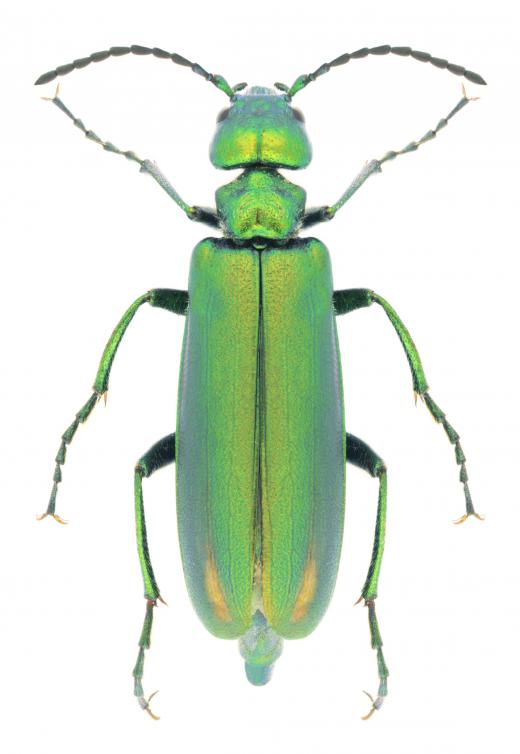In Biology, what is an Exoskeleton?
 Michael Anissimov
Michael Anissimov
In biology, an exoskeleton refers to the chitinous or calcified external skeleton used by numerous animal taxa for structural support and defense against predators. Exoskeletons can be contrasted with endoskeletons (internal skeletons) that humans and other vertebrates have. In the animal world, exoskeletons are much more common than endoskeletons -- millions of species have exoskeletons, while only a few thousand have endoskeletons. It is believed that 18 lineages have evolved calcified exoskeletons alone, with others evolving chitinous and other types of exoskeletons. Exoskeletons are especially popular among arthropods and mollusks, two of the largest animal phyla in existence.
The exoskeleton first appears in the fossil record very early, about 550 million years ago, when small tube-shaped animals called Cloudina appear in the fossil record. Paleontologists have not entirely agreed on what Cloudina actually was, but the current popular guess is that it was a polychaete -- a marine annelid. Cloudina is the first of the small shelly fauna, numerous carbonate-shelled animals that evolved just at the beginning of the Cambrian period 545 million years ago. The appearance of the small shelly fauna marks the start of the Cambrian period.

An exoskeleton has numerous benefits for the organism or lineage that evolves it -- first and foremost, it provides protection. It is apparently one of the easiest defense mechanisms to evolve, and probably emerged in the earliest days of animal predation. Even the earliest exoskeletons in the fossil record appear to have boreholes, indicative of predation. Many of the first animals to evolve an exoskeleton were apparently mollusks. Kimberella, a mollusk-like creature that existed a full 555 million years ago, had a tough shell, but it wasn't mineralized, thus making it not a true exoskeleton. Mineralized exoskeletons would appear in large numbers shortly thereafter.

Besides protecting against predation, an exoskeleton provides structural support for an animal. In some cases, this allows them a larger maximum size than they would be able to attain otherwise. For instance, Dunkelosteus, a 6 m (20 ft) fish that is considered one of the most fearsome marine hunters of all time, was a placoderm, an animal whose large size was made partially possible by the sturdy armor that covered its head. Though vertebrates are in general larger than invertebrates (partially because they dominate the land), medium-sized invertebrates with exoskeletons are generally better off than those without, as evidenced by the success of the largest phyla in the animal kingdom, the arthropods.
AS FEATURED ON:
AS FEATURED ON:












Discuss this Article
Post your comments